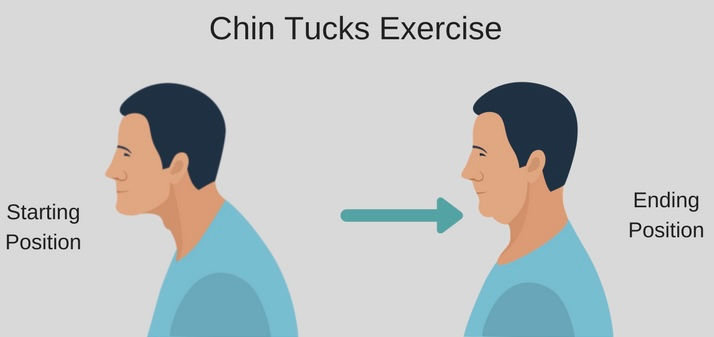Dowager’s Hump Correction with Crab Breathing: A Biomechanical Approach to Spinal Realignment and Postural Restoration
- Davide Rossi

- Jul 6
- 4 min read
Updated: Jul 16
In the modern world of desk-bound work, forward head posture and upper spine misalignment have become alarmingly common—especially among professionals spending long hours at computers. One of the most visible manifestations of this postural collapse is the dowager’s hump, medically termed thoracic hyperkyphosis.
At RE-COMP Fitness Lab, we take a structural and functional approach to dowager’s hump correction—focusing not just on appearance, but on restoring joint mechanics, neuromuscular balance, and breathing coordination.
One of the most effective but underutilized techniques in reversing thoracic rounding is crab breathing—a form of deep postural respiration that reactivates underused musculature and reopens thoracic space.
🧠 What Is Dowager’s Hump? A Structural Breakdown
Dowager’s hump refers to an excessive kyphotic curvature in the upper thoracic spine, typically localized between T1–T7, often accompanied by forward head posture (FHP) and scapular protraction.
Biomechanical Hallmarks:
Thoracic hyperflexion (forward spinal rounding)
Forward displacement of the cervical spine
Internal rotation of the humerus
Scapular elevation and abduction
Compensatory lumbar hyperlordosis or pelvic tilt
Although most visible at the base of the neck, kyphosis alters the entire spinal chain. It compresses intervertebral discs, disrupts normal load distribution, and impairs respiratory function.
🧬 What Causes Dowager’s Hump? Beyond Poor Posture
1. Muscle Imbalance and Inhibition
Prolonged poor posture leads to shortened anterior muscles (e.g., pectoralis major/minor) and inhibited posterior chain muscles (e.g., rhomboids, lower trapezius). This imbalance reinforces the kyphotic curve and weakens the spine’s ability to resist gravitational pull.
2. Sedentary Behavior and Thoracic Rigidity
Sitting for extended periods leads to thoracic spine stiffness, particularly in the costovertebral joints. The resulting lack of mobility contributes to forward head posture, scapular dyskinesis, and trunk collapse.
3. Respiratory Dysfunction
Chronic mouth breathing or shallow chest breathing fails to engage the diaphragm and intercostals, leading to underused postural support muscles and excessive reliance on accessory breathing muscles like the scalenes and upper traps—contributing to cervical tension and postural fatigue.
💨 The Role of Crab Breathing in Dowager’s Hump Correction
Crab breathing, a diaphragmatic breathing technique performed with an extended thoracic posture, restores expansion through the anterior ribcage and upper thoracic cavity. It facilitates muscular rebalancing, spinal decompression, and neuromuscular re-education.
How Crab Breathing Works:
Promotes ribcage mobility via thoracic extension and intercostal activation
Engages posterior chain by reactivating rhomboids, lower traps, and thoracic erectors
Enhances proprioception of the scapulothoracic and cervicothoracic junctions
Increases intra-thoracic volume, reducing spinal compression and tension

This technique also activates Zone of Apposition (ZOA)—a key region where the diaphragm aligns with the ribcage, enabling optimal respiratory and postural integration.
🧠 Three Key Corrective Exercises for Dowager’s Hump Correction
🫁 1. Crab Breathing
Purpose: Re-expand the ribcage, restore thoracic extension, and decompress the spine.
How to perform:
Sit or stand tall, spine neutral, feet grounded.
Interlace your fingers behind your head, elbows wide.
Inhale deeply through the nose, expanding your upper rib cage and chest wall.
As you inhale, gently retract your elbows and lift the sternum.
Exhale slowly through the mouth, maintaining ribcage expansion and core engagement.
Repeat for 10–12 cycles, focusing on lifting posture and reducing upper thoracic rigidity.
🧪 Physiological Benefits:
Stimulates posterior chain neuromuscular activity
Increases thoracic spine segmental mobility
Re-educates diaphragm–rib–pelvis alignment

🧠 2. Chin Tucks
Purpose: Correct forward head posture by activating the deep cervical flexors (longus colli and longus capitis) and reducing upper cervical extension.
How to perform:
Sit or stand upright.
Keep eyes level, gently retract the chin straight back (avoid tilting).
Imagine “making a double chin.”
Hold for 5 seconds, feeling tension in the deep neck flexors.
Relax and repeat for 10–15 reps.
🧪 Why It Works:
Re-centers the craniovertebral junction (C0–C2)
Inhibits overactive suboccipitals and SCM
Reduces neck tension and aligns the cervical spine with the thorax

🏋️ 3. Resistance Band Pull-Aparts
Purpose: Strengthen scapular retractors (rhomboids, mid/lower traps) to improve posture and shoulder positioning.
How to perform:
Hold a resistance band at shoulder height, arms straight.
Pull the band apart while squeezing the shoulder blades together.
Hold for 2–3 seconds, then return to start.
Perform 2–3 sets of 10–15 reps, focusing on scapular motion, not elbow bending.
🧪 Targeted Effect:
Rebalances anterior/posterior shoulder tension
Reinforces thoracic extension and scapular stability
Offloads tension from the neck and cervical spine

🔄 Integrated Strategy: Breathing + Alignment + Strength
Improving kyphosis and posture is not about "standing up straight"—it's about training the underlying systems that hold your spine upright. These include:
Neuromuscular control of postural stabilizers
Segmental spinal mobility, particularly in T-spine
Respiratory coordination for sustained upright alignment
By integrating crab breathing with strategic movement, you re-train your body’s default postural programming.
📉 Long-Term Impacts of Ignoring Postural Kyphosis
Neglecting kyphosis can lead to:
Chronic neck and shoulder pain
Respiratory restriction due to thoracic collapse
Spinal disc compression and degenerative changes
Impaired gait and balance in older adults
Reduced confidence and psychological burden
Prevention and correction begin with awareness, followed by consistent mechanically sound interventions.
📲 Conclusion: Reverse the Curve—One Breath at a Time
Dowager’s hump may be common, but it’s not inevitable—and often reversible with the right interventions. Crab breathing serves as a powerful entry point to correct posture by addressing the respiratory–musculoskeletal connection.
Paired with chin tucks and resistance band pull-aparts, this integrated method strengthens your posture from the inside out—activating deep musculature, restoring joint alignment, and breathing life back into your spine.
🔍 Ready to Reclaim Your Posture and Performance?
Book your FREE Body Check and Postural Assessment today at RE-COMP Fitness Lab.Let’s uncover the root cause of your postural issues and build a customized mobility + breathwork plan to eliminate pain and restore confidence.
Stand taller. Breathe deeper. Move better.





Comments